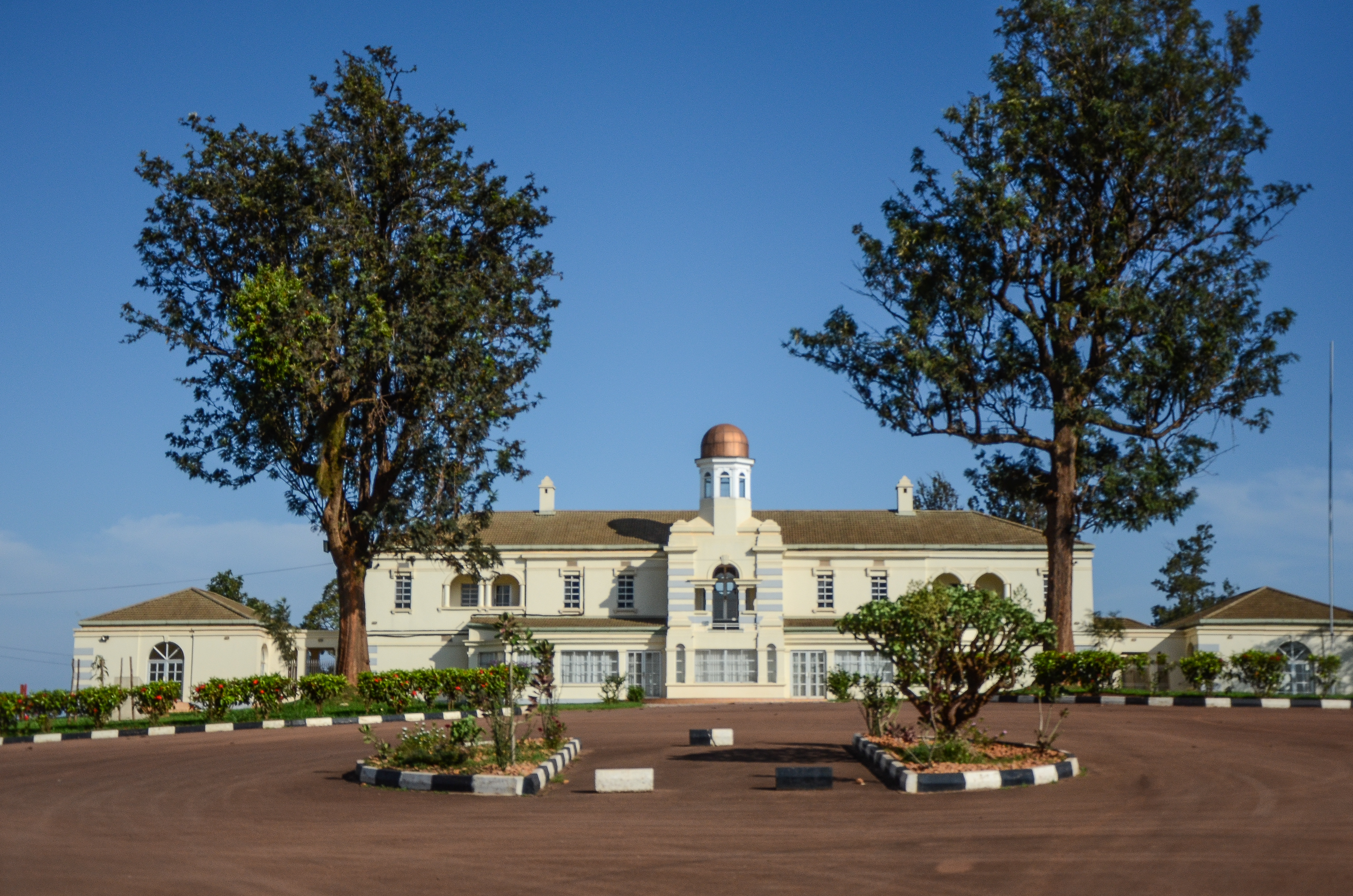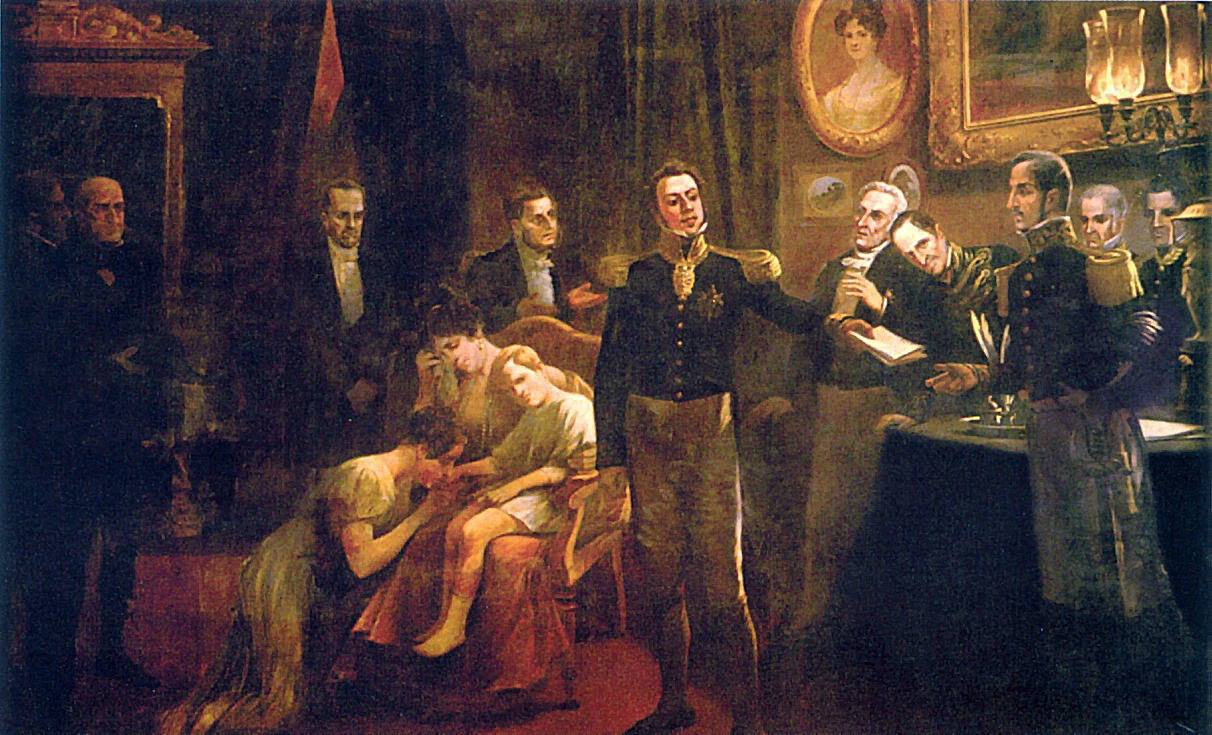|
Kiyimba Of Buganda
Ntege Kiyimba was Kabaka (King) of the Kingdom of Buganda. He reigned from 1464 to 1484. He was the 6th Kabaka of Buganda. Claim to the throne He was the sixth son of Kabaka Kiggala Mukaabya. His mother was Nabukalu, of the Lugave clan, the first wife of Kabaka Kiggala Mukaabya. He ascended the throne around 1464, when his father abdicated. His reign was unpopular as a result of his cruelty. He died before his father did and was consequently succeeded by his father. Married life He had two wives but fathered no children from either wife: *Bamuggya, daughter of Kisuule, of the Njaza clan *Gwojjanjaba, daughter of Gunju, of the Butiko clan. Death He died at Mpummudde and was initially buried at Lukwangu, Busiro. He was succeeded on the throne by his father, around 1484. He is buried at Sentema, Busiro, in modern-day Wakiso District. Succession table See also *Kabaka of Buganda Kabaka is the title of the monarch, king of the Buganda, Kingdom of Buganda.Stanley, H.M., 1 ... [...More Info...] [...Related Items...] OR: [Wikipedia] [Google] [Baidu] |
Kabaka Of Buganda
Kabaka is the title of the monarch, king of the Buganda, Kingdom of Buganda.Stanley, H.M., 1899, Through the Dark Continent, London: G. Newnes, According to the traditions of the Baganda, they are ruled by two kings, one spiritual and the other secular. The spiritual, or supernatural, king is represented by the Royal Drums, regalia called ''Mujaguzo''. As they always exist, Buganda will always have a king. ''Mujaguzo'', like any other king, has his own palace, officials, servants and palace guards. The material, human prince has to perform special cultural rites on the Royal Drums before he can be declared king of Buganda. Upon the birth of a royal prince or princess, the Royal Drums are sounded by drummers specially selected from a specified clan as a means of informing the subjects of the kingdom of the birth of a new member of the royal family. The same Royal Drums are sounded upon the death of a reigning king to officially announce the death of the material king. According ... [...More Info...] [...Related Items...] OR: [Wikipedia] [Google] [Baidu] |
Kiggala Of Buganda
Kiggala Sewannaku Mukaabya Kasungubu (died 1494) was Kabaka of the Kingdom of Buganda. He reigned from 1434 until 1464 and from 1484 until 1494. He was the 5th Kabaka of Buganda. Claim to the throne He was the eldest son of Kabaka Ttembo, Kabaka of Buganda, by his wife, Najjemba. He ascended to the throne upon the death of his father, around 1434. He established his capital at Kitala Hill. In 1464, he abdicated the throne in favor of his son, Ntege Kiyimba. Kiggala resumed the throne after the death of his son, sometime around 1484. He went blind shortly after the beginning of his second reign. He ruled under the regency of his prime ministers. Married life He married six wives as detailed below: # Nabukalu Nabuto, daughter of Natiigo, of the Lugave clan # Nakawuka, daughter of Senfuma, of the Mamba clan # Nakimera, daughter of Masembe, of the Nsenene clan # Nakku, daughter of Walusimbi, of the Ffumbe clan # Nakyobula, daughter of Mbajja, of the Mamba clan # Nawampamba, daugh ... [...More Info...] [...Related Items...] OR: [Wikipedia] [Google] [Baidu] |
Buganda
Buganda is a Bantu peoples, Bantu kingdom within Uganda. The kingdom of the Baganda, Baganda people, Buganda is the largest of the List of current non-sovereign African monarchs, traditional kingdoms in present-day East Africa, consisting of Uganda's Districts of Uganda, Central Region, including the Ugandan capital Kampala. The 14 million ''Baganda'' (singular ''Muganda''; often referred to simply by the root word and adjective, Ganda) make up the largest Ugandan region, representing approximately 16% of Demographics of Uganda, Uganda's population. History of Buganda, Buganda's history includes unification during the 13th century by the first king, Kato Kintu, the founder of Buganda's Kintu dynasty, Buganda grew to become one of the largest and most powerful states in East Africa during the 18th and the 19th centuries. During the Scramble for Africa, and following unsuccessful attempts to retain its independence against British Empire, British imperialism, Buganda became the ce ... [...More Info...] [...Related Items...] OR: [Wikipedia] [Google] [Baidu] |
Enthronement
An enthronement is a ceremony of inauguration, involving a person—usually a monarch or religious leader—being formally seated for the first time upon their throne. Enthronements may also feature as part of a larger coronation rite. In a general sense, an ''enthronement'' may also refer to a ceremony marking a monarch's accession, generally distinguished from a coronation as no crown or other regalia is physically bestowed upon the one being enthroned, although regalia may be present at the ceremony. Enthronements occur in both church and state settings, since the throne is seen as a symbol of authority, both secular and spiritual. Religious ceremonies State ceremonies Previously, most inaugural ceremonies marking the accession of a monarch took the form of a coronation rite, wherein the ruler was consecrated, physically crowned, and invested with other items of regalia. Now that coronations are no longer being practiced in most monarchies (most nations require on ... [...More Info...] [...Related Items...] OR: [Wikipedia] [Google] [Baidu] |
Abdicate
Abdication is the act of formally relinquishing monarchical authority. Abdications have played various roles in the succession procedures of monarchies. While some cultures have viewed abdication as an extreme abandonment of duty, in other societies (such as pre-Meiji Restoration Japan), abdication was a regular event and helped maintain stability during political succession. Historically, abdications have occurred both by force (where the regnant was '' dethroned'', thus forced to abdicate on pain of death or other severe consequences) and voluntarily. Some rulers are deemed to have abdicated ''in absentia'', vacating the physical throne and thus their position of power, although these judgements were generally pronounced by successors with vested interests in seeing the throne abdicated, and often without or despite the direct input of the abdicating monarch. Recently, due to the largely ceremonial nature of the regnant in many constitutional monarchies, many monarchs have ... [...More Info...] [...Related Items...] OR: [Wikipedia] [Google] [Baidu] |
Throne
A throne is the seat of state of a potentate or dignitary, especially the seat occupied by a sovereign (or viceroy A viceroy () is an official who reigns over a polity in the name of and as the representative of the monarch of the territory. The term derives from the Latin prefix ''vice-'', meaning "in the place of" and the Anglo-Norman ''roy'' (Old Frenc ...) on state occasions; or the seat occupied by a pope or bishop on ceremonial occasions. "Throne" in an abstract sense can also refer to the monarchy itself, an instance of metonymy, and is also used in many expressions such as "power behind the throne, the power behind the throne". A throne is a symbol of divine and secular rule and the establishment of a throne as a defining sign of the claim to power and authority. It can be with a high backrest and feature heraldic animals or other decorations as adornment and as a sign of power and strength. A throne can be placed underneath a canopy or baldachin. The throne can s ... [...More Info...] [...Related Items...] OR: [Wikipedia] [Google] [Baidu] |
Sentema
Sentema is a town in Wakiso District, central Uganda. The town is a municipality under Wakiso District Administration. The other municipalities in the district include: * Entebbe Municipality * Kira Municipality * Nansana Municipality * Makindye Ssabagabo Municipality Location Sentema is located in Wakiso District, approximately , by road, northwest of Kampala, Uganda's capital and largest city. The coordinates of Sentema are:0°22'14.0"N, 32°24'56.0"E (Latitude:0.370556; Longitude:32.415556). Population The exact population of Sentema is not known as of February 2015. Points of interest The following points of interest are located in Sentema: * The offices of Sentema Town Council * Sentema Prison - Under the administration of the Uganda Prisons Services See also *Wakiso District *Central Region, Uganda The Central region is one of the four regions in the country of Uganda. As of Uganda's 2014 census, the region's population was . It is coterminous with the Kingdom o ... [...More Info...] [...Related Items...] OR: [Wikipedia] [Google] [Baidu] |
Wakiso District
Wakiso District is a Districts of Uganda, district in the Central Region, Uganda, Central Region of Uganda that partly encircles Kampala, Uganda's capital city. The town of Wakiso is the site of the district headquarters. Kira Town, Kira, the country's second largest city and suburb of Kampala, is in the district. Location Wakiso District lies in the Central Region of the country, bordering Nakaseke District and Luweero District to the north, Mukono District to the east, Kalangala District in Lake Victoria to the south, Mpigi District to the southwest and Mityana District to the northwest. Wakiso, where the district headquarters are located, lies approximately northwest of Kampala, the capital of Uganda and the largest city in the country. The coordinates of the district are:00 24N, 32 29E. Demographics In 1991, the national population census estimated the district population at 562,887. According to the 2002 national census figures, Wakiso District had a population of 907,988, m ... [...More Info...] [...Related Items...] OR: [Wikipedia] [Google] [Baidu] |
King Of Buganda
King is a royal title given to a male monarch. A king is an absolute monarch if he holds unrestricted governmental power or exercises full sovereignty over a nation. Conversely, he is a constitutional monarch if his power is restrained by fixed laws. Kings are hereditary monarchs when they inherit power by birthright and elective monarchs when chosen to ascend the throne. *In the context of prehistory, antiquity and contemporary indigenous peoples, the title may refer to tribal kingship. Germanic kingship is cognate with Indo-European traditions of tribal rulership (cf. Indic ''rājan'', Gothic ''reiks'', and Old Irish ''rí'', etc.). *In the context of classical antiquity, king may translate in Latin as '' rex'' and in Greek as ''archon'' or ''basileus''. *In classical European feudalism, the title of ''king'' as the ruler of a ''kingdom'' is understood to be the highest rank in the feudal order, potentially subject, at least nominally, only to an emperor (harking back to ... [...More Info...] [...Related Items...] OR: [Wikipedia] [Google] [Baidu] |
15th-century Monarchs In Africa
The 15th century was the century which spans the Julian calendar dates from 1 January 1401 (represented by the Roman numerals MCDI) to 31 December 1500 (MD). In Europe, the 15th century includes parts of the Late Middle Ages, the Early Renaissance, and the early modern period. Many technological, social and cultural developments of the 15th century can in retrospect be seen as heralding the " European miracle" of the following centuries. The architectural perspective, and the modern fields which are known today as banking and accounting were founded in Italy. The Hundred Years' War ended with a decisive French victory over the English in the Battle of Castillon. Financial troubles in England following the conflict resulted in the Wars of the Roses, a series of dynastic wars for the throne of England. The conflicts ended with the defeat of Richard III by Henry VII at the Battle of Bosworth Field, establishing the Tudor dynasty in the later part of the century. Constant ... [...More Info...] [...Related Items...] OR: [Wikipedia] [Google] [Baidu] |







